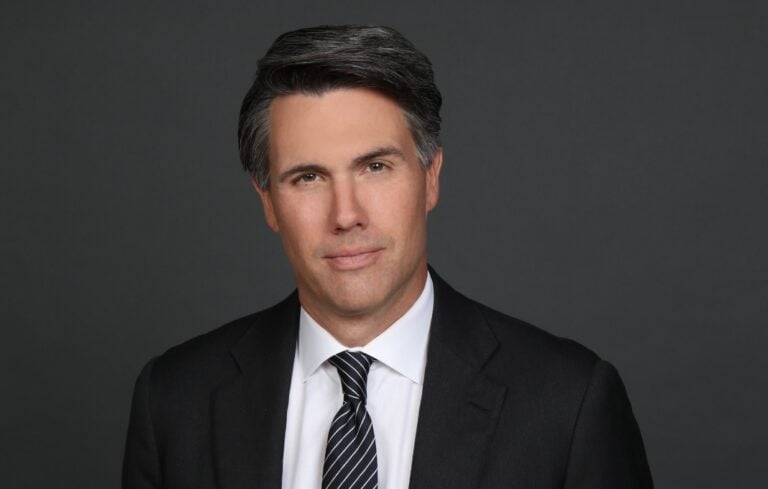

| 2012 RANK | STATE | 2011 RANK | 1-YEAR CHANGE |
| 1 | Texas | 1 | 0 |
| 2 | Florida | 3 | 1 |
| 3 | North Carolina | 2 | -1 |
| 4 | Tennessee | 4 | 0 |
| 5 | Indiana | 6 | 1 |
| 6 | Virginia | 7 | 1 |
| 7 | South Carolina | 8 | 1 |
| 8 | Georgia | 5 | -3 |
| 9 | Utah | 9 | 0 |
| 10 | Arizona | 13 | 3 |
| 11 | Colorado | 12 | 1 |
| 12 | Nevada | 10 | -2 |
| 13 | Louisiana | 27 | 14 |
| 14 | Delaware | 16 | 2 |
| 15 | North Dakota | 21 | 6 |
| 16 | Wyoming | 14 | -2 |
| 17 | Oklahoma | 11 | -6 |
| 18 | Idaho | 19 | 1 |
| 19 | South Dakota | 15 | -4 |
| 20 | Wisconsin | 24 | 4 |
| 21 | Alabama | 26 | 5 |
| 22 | Iowa | 22 | 0 |
| 23 | Kansas | 25 | 2 |
| 24 | Missouri | 23 | -1 |
| 25 | Kentucky | 17 | -8 |
| 26 | New Hampshire | 18 | -8 |
| 27 | Nebraska | 20 | -7 |
| 28 | Montana | 28 | 0 |
| 29 | Arkansas | 30 | 1 |
| 30 | Mississippi | 38 | 8 |
| 31 | Alaska | 31 | 0 |
| 32 | Maine | 36 | 4 |
| 33 | New Mexico | 32 | -1 |
| 34 | West Virginia | 42 | 8 |
| 35 | Ohio | 41 | 6 |
| 36 | Minnesota | 29 | -7 |
| 37 | Washington | 34 | -3 |
| 38 | Vermont | 40 | 2 |
| 39 | Rhode Island | 35 | -4 |
| 40 | Maryland | 37 | -3 |
| 41 | Hawaii | 43 | 2 |
| 42 | Oregon | 33 | -9 |
| 43 | Pennsylvania | 39 | -4 |
| 44 | Connecticut | 44 | 0 |
| 45 | New Jersey | 47 | 2 |
| 46 | Michigan | 46 | 0 |
| 47 | Massachusetts | 45 | -2 |
| 48 | Illinois | 48 | 0 |
| 49 | New York | 49 | 0 |
| 50 | California | 50 | 0 |
In Chief Executive’s eighth annual survey of CEO opinion of Best and Worst States in which to do business, Texas easily clinched the No. 1 rank, the eighth successive time it has done so. California earns the dubious honor of being ranked dead last for the eighth consecutive year.
This year, 650 business leaders responded to our annual survey, up from 550 in 2011. CEOs were asked to grade states in which they do business among a variety of areas, including tax and regulation, quality of workforce and living environment. The Lone Star State was given high marks foremost for its business-friendly tax and regulatory environment. But its workforce quality, second only to Utah’s, is also highly regarded.
Florida moved up from number three last year to number two. Last year, Florida Gov. Rick Scott penned a tongue-in-cheek letter to Texas Gov. Rick Perry, warning him that Florida is coming after the Lone Star State’s top ranking. Since Scott took office, his administration has enacted business tax and regulatory reforms that have contributed to the creation of more than 140,000 private sector jobs and an unemployment drop of 2.1 percentage points last year—one of the biggest decreases in the nation.
It is perhaps no coincidence that Texas and Florida have the highest net migration of people to their states from 2001 to 2009. (By contrast, New York and California lost over 1.6 million and 1.5 million in net migration out of the states, respectively, over the same period.) People migrate in search of employment, but this can cut both ways. Texas is justly proud of adding to its employment numbers, something Gov. Perry cited numerous times during his brief campaign for the Republican Presidential nomination. Between June 2009—which marked the official end of the recession—and July 2011, the number of jobs increased in the state by 328,000. Nationally, the job growth in that time period was 697,000 according to figures from the Bureau of Labor Statistics. This translates to Texas jobs making up 47 percent of the national net job creation. However, neither Texas, nor the nation, is adding jobs at a pace fast enough to bring down unemployment to historically normal levels. And Texas’ unemployment rate—while still below the national average—is now higher than that of 26 states.
North Carolina, Tennessee, Indiana, Virginia, South Carolina, Georgia and Utah held their positions in the top 10, with Indiana moving up a notch to fifth. CEOs indicate that workforce quality is the state’s single greatest strength, and since it became the 23rd right-to-work state last year, the Hoosier State is likely to punch above its weight competitively in the future. “Indiana is like a breath of fresh air,” volunteered one manufacturing CEO. “I have operated on both coasts, the Southeast and Chicago, and Indiana is where I will keep my manufacturing operations.”
It may be no accident that most of the states in the top 20 are also right-to-work states, as labor force flexibility is highly sought after when a business seeks a location. Several economists, most notably Ohio State’s Richard Vedder and Harvard’s Robert Barro, have found that the economies in R-to-W areas grow faster than other states, have higher employment and attract more inward migration. Governor Scott Walker’s battle with the unions in Wisconsin (See “Will Wisconsin Rise Again?”), a state that edged into the top 20 this year for this first time, demonstrates that the struggle for a pro-growth agenda can be contentious. As one Badger State business leader remarked, “Finally, Wisconsin is headed in the right direction.”
Although often eclipsed by Texas, its next door neighbor, Louisiana, is the Cinderella of business improvement. In 2006, it ranked 47th—where Massachusetts is today. And Katrina didn’t help matters. But since then it has climbed steadily up the ranks so that it is now 13th—up from 27th last year—the biggest leap in a single year of any state. “In Louisiana there is an active government push to reduce taxes and regulation and to encourage new industry to relocate to the state,” commented one chairman. “This was valuable for one of our companies, which decided to make the state our headquarters.” Other chiefs point to the big strides the state has made in workforce training and economic incentives. Its economic development office is also aggressive in luring disaffected businesses from the Northeast and California.
“I have operated on both coasts… and Indiana is where I will keep my manufacturing operations.”
California’s enduring place of perpetual decline continues in this year’s ranking. Once the most attractive business environment, the Golden State appears to slip deeper into the ninth circle of business hell. The economy, which used to outperform the rest of the country, now substantially underperforms. And its status as the most ruinously contentious place to operate remains undisturbed in eight years. Its unemployment rate, at 10.9 percent, is higher than every other state except Nevada and Rhode Island. With 12 percent of America’s population, California has one-third of the nation’s welfare recipients. Each year, the evidence that businesses are leaving California or avoid locating there because of the high cost of doing business due to excessive state taxes and stringent regulations, grows. (See “Eastward Ho!”) According to Spectrum Location Solutions, 254 California companies moved some or all of their work and jobs out of state in 2011, an increase of 26 percent over the previous year and five times as many as in 2009.



0

1:00 - 5:00 pm
Over 70% of Executives Surveyed Agree: Many Strategic Planning Efforts Lack Systematic Approach Tips for Enhancing Your Strategic Planning Process
Executives expressed frustration with their current strategic planning process. Issues include:
Steve Rutan and Denise Harrison have put together an afternoon workshop that will provide the tools you need to address these concerns. They have worked with hundreds of executives to develop a systematic approach that will enable your team to make better decisions during strategic planning. Steve and Denise will walk you through exercises for prioritizing your lists and steps that will reset and reinvigorate your process. This will be a hands-on workshop that will enable you to think about your business as you use the tools that are being presented. If you are ready for a Strategic Planning tune-up, select this workshop in your registration form. The additional fee of $695 will be added to your total.

2:00 - 5:00 pm
Female leaders face the same issues all leaders do, but they often face additional challenges too. In this peer session, we will facilitate a discussion of best practices and how to overcome common barriers to help women leaders be more effective within and outside their organizations.
Limited space available.

10:30 - 5:00 pm
General’s Retreat at Hermitage Golf Course
Sponsored by UBS
General’s Retreat, built in 1986 with architect Gary Roger Baird, has been voted the “Best Golf Course in Nashville” and is a “must play” when visiting the Nashville, Tennessee area. With the beautiful setting along the Cumberland River, golfers of all capabilities will thoroughly enjoy the golf, scenery and hospitality.
The golf outing fee includes transportation to and from the hotel, greens/cart fees, use of practice facilities, and boxed lunch. The bus will leave the hotel at 10:30 am for a noon shotgun start and return to the hotel after the cocktail reception following the completion of the round.